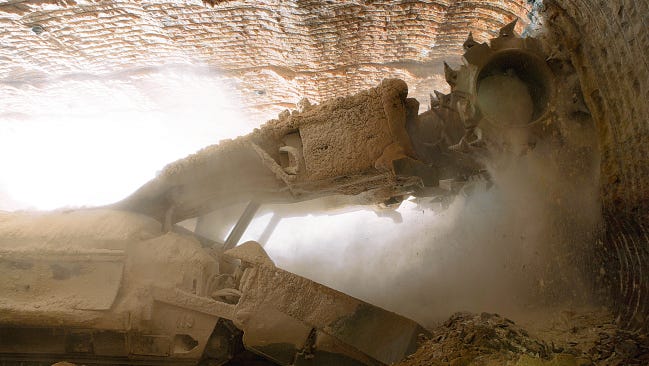[ad_1]
A review of Mosaic’s environmental permit includes an investigation into water contamination detected in nearby groundwater monitoring wells along the Pecos River near Carlsbad from the company’s potash mining operations.
Potash mining is a main economic driver of Eddy County. The New Mexico Environment Department (NMED) monitors discharges from the Carlsbad areas two mines, including Mosaic.
Water contamination from local potash mining along the Pecos River near Carlsbad was detected in nearby groundwater monitoring wells, and the State of New Mexico is investigating the operations of Mosaic Potash.
Sign up for our newsletter, the Daily Briefing, to get stories like this one delivered straight to your inbox every morning.
The agency required Mosaic to submit a plan to monitor its contamination between the river and Mosaic’s privately-owned Laguna Grande, a nearby salt lake the company owns.
NMED is in the process of reviewing Mosaic’s abatement plan and its efforts to cleanup the pollution in renewing the company’s discharge permit.
Here’s what we know about water pollution caused by Mosaic’s mining operations and how the State is investigating.
More:Projects to address water, air pollution in Permian Basin grow along with fuel demand

What is potash? What is it used for?
Mosaic’s mine, about 16 miles east of Carlsbad off the Hobbs Highway, produces the ore both through its underground mining and surface operations for use mostly as a plant fertilizer and in animal feed.
Carlsbad was the site of Potash’s first discovery in North America in 1925 during oil drilling and led to a boom in development in the former ranching town that predated the area’s prominence in fossil fuels.
Potash is a salt rich in potassium and was used in the years since its discovery in myriad products from makeup to gun powder.
More:420,000 gallon oil, water spill reported east of Carlsbad. State works to clean up the site
How does potash mining impact local water supplies?
Waste resulting from mining the ore is moved around the facility into multiple disposal areas, potentially leeching into groundwater supplies.
Extracting potash from underground generates tailings, or solid waste – mostly clay and salt – that are disposed of, along with salty brine water.
That waste is sent to a “salt stack” where the salt and clay settle and the brine water and residual clay flow into a clay settling pond.
The brine is discharged from the pond through a pipeline into Laguna Grande, and then into evaporation cells where the resulting chloride salt is harvested.
More:New Mexico’s oil and gas wastewater reuse experiments to begin in 2022
How much contamination is there?
Mosaic’s present discharge permit allows for up to 7.5 million gallons per day of tailings, brine and other liquids to the salt stack, including 29,000 gallons per day of untreated domestic wastewater.
These discharges have the potential, per a report from NMED’s Ground Water Quality Bureau, to increase groundwater in the area to more than State standards for total dissolved solids (TDS), potentially impacting the Pecos River.
Should that happen, NMED has the authority to close the facility and require Mosaic provide an immediate plan to mitigate the pollution.
NMED holds a bond with Mosaic for about $82 million to fund such a closure should elevated contaminant levels be detected.
More:The desert dries up: New Mexico’s water analysis predicts worsening climate change impacts
What is the State doing to address the resulting contamination?
Mosaic holds a groundwater discharge permit with the NMED to regulate contaminants released by this facility, first issued in 2004 and renewed last in 2011.
The permit includes the abatement plan which defines how the company reduces its environment impact.
Mosaic is required to collect water samples quarterly from several monitoring wells in the area and from the Pecos River, and report to NMED on the levels of TDS and other contaminants.
NMED is presently reviewing the plan, which includes site conditions, history and past investigations along with steps taken to characterize the nature and extent of the contamination.
The State will either approve the plan or file a notice of deficiency to Mosaic Potash Carlsbad within 60 days.
If approved, Mosaic will then be required to generate a second abatement plan, proposing steps to clean up the contamination.
Adrian Hedden can be reached at 575-628-5516, achedden@currentargus.com or @AdrianHedden on Twitter.
[ad_2]
Source link















